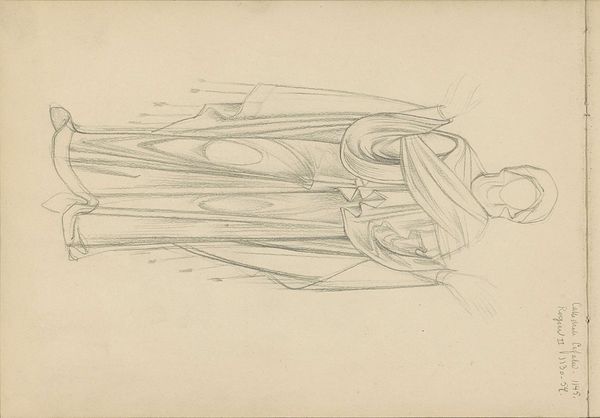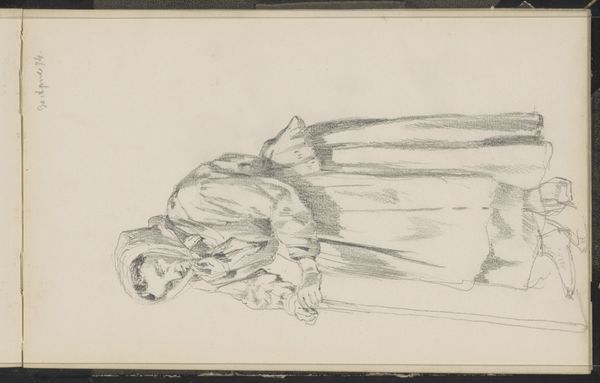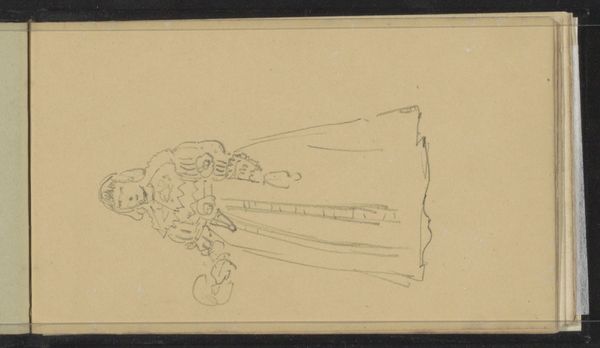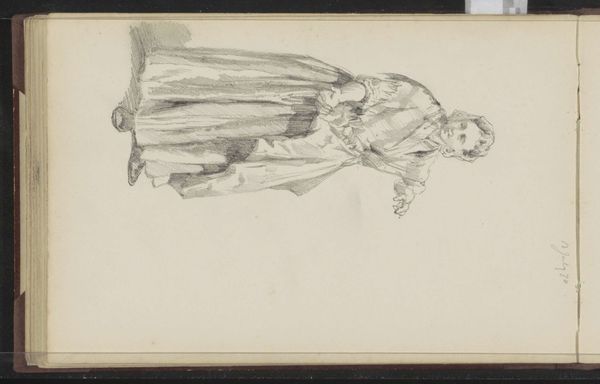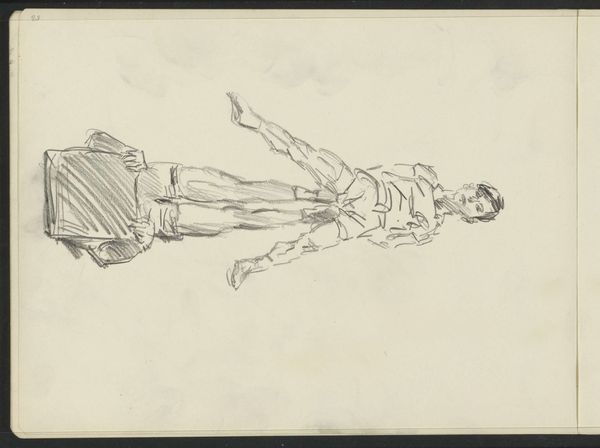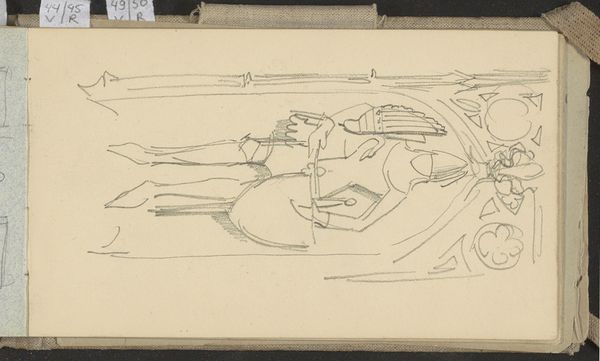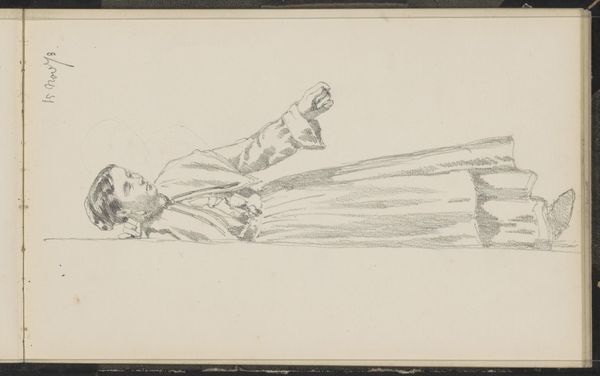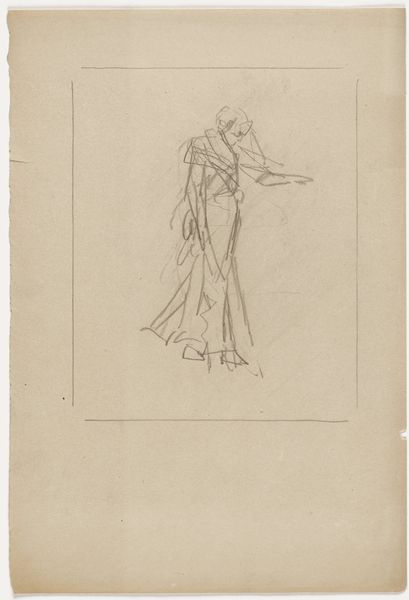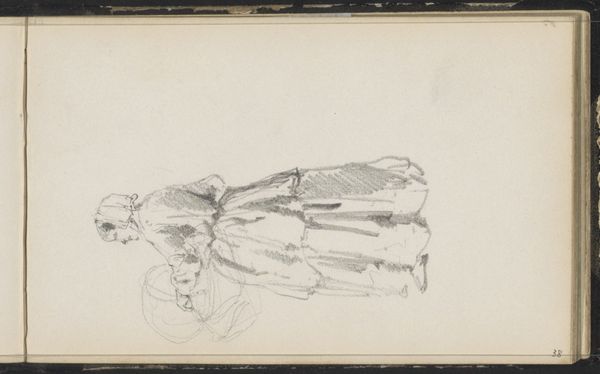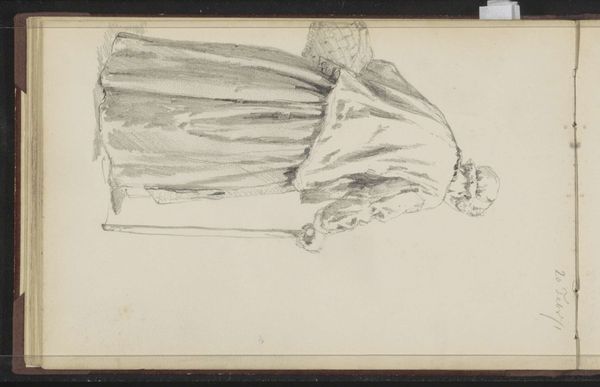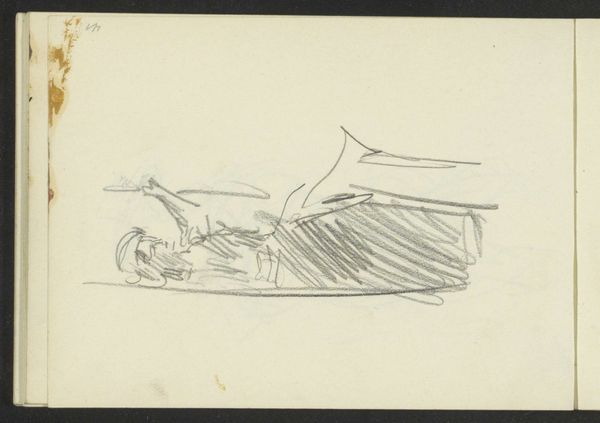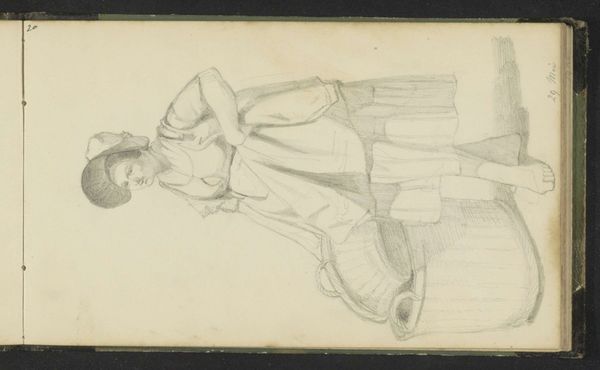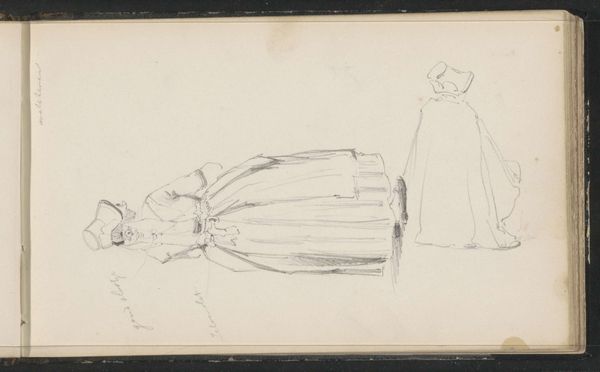
drawing, coloured-pencil, pencil
#
portrait
#
drawing
#
coloured-pencil
#
figuration
#
pencil
#
symbolism
Copyright: Rijks Museum: Open Domain
Curator: Antoon Derkinderen created this symbolic drawing titled "Amsterdamse stedenmaagd" between 1900 and 1903, utilizing pencil and colored pencil. What strikes you immediately? Editor: There's an unfinished quality, a sense of preliminary exploration that feels very intimate. It's melancholic and almost vulnerable, even though it depicts an allegorical figure. Curator: Indeed. The composition employs delicate lines and subtle coloring to portray the Amsterdam Virgin, a personification of the city, within a decorative frame. Editor: It's interesting how Derkinderen blends the personal with the political here. The "Virgin of Amsterdam," typically a symbol of civic pride, is rendered with such delicate, almost fragile strokes. Was he commenting on the city’s own anxieties or challenges during that period? The use of pencil rather than paint seems a conscious choice to avoid grandiosity. Curator: The symbolist movement, with which Derkinderen is affiliated, certainly lends itself to such interpretations. The artwork is not merely representational; it explores deeper meanings and emotional resonance. I wonder about the implications of the frame, though. It restrains and showcases her as an emblem, right? Editor: Exactly. This restriction contrasts with the soft coloring of the figure herself, a vibrant core stifled by imposed order. It subtly questions the cost of maintaining such traditional symbols within the evolving reality of urban life. Curator: It presents the observer with more than just an illustration; it poses questions. The incompleteness underscores its status as a proposal. It encourages a dialogue between past ideals and burgeoning modern sensitivities. Editor: Ultimately, Derkinderen's work encourages us to examine the narratives we build around our cities and how we grapple with evolving identities within these urban spaces. A fascinating, deceptively simple piece! Curator: It prompts critical reflection not only on historical context, but on art’s very capacity to provoke and challenge societal conventions.
Comments
No comments
Be the first to comment and join the conversation on the ultimate creative platform.
